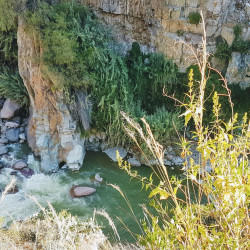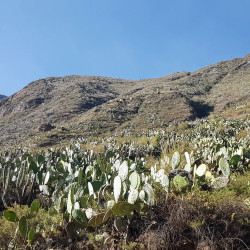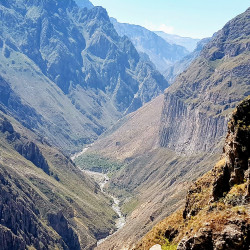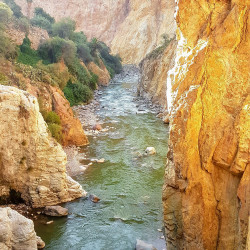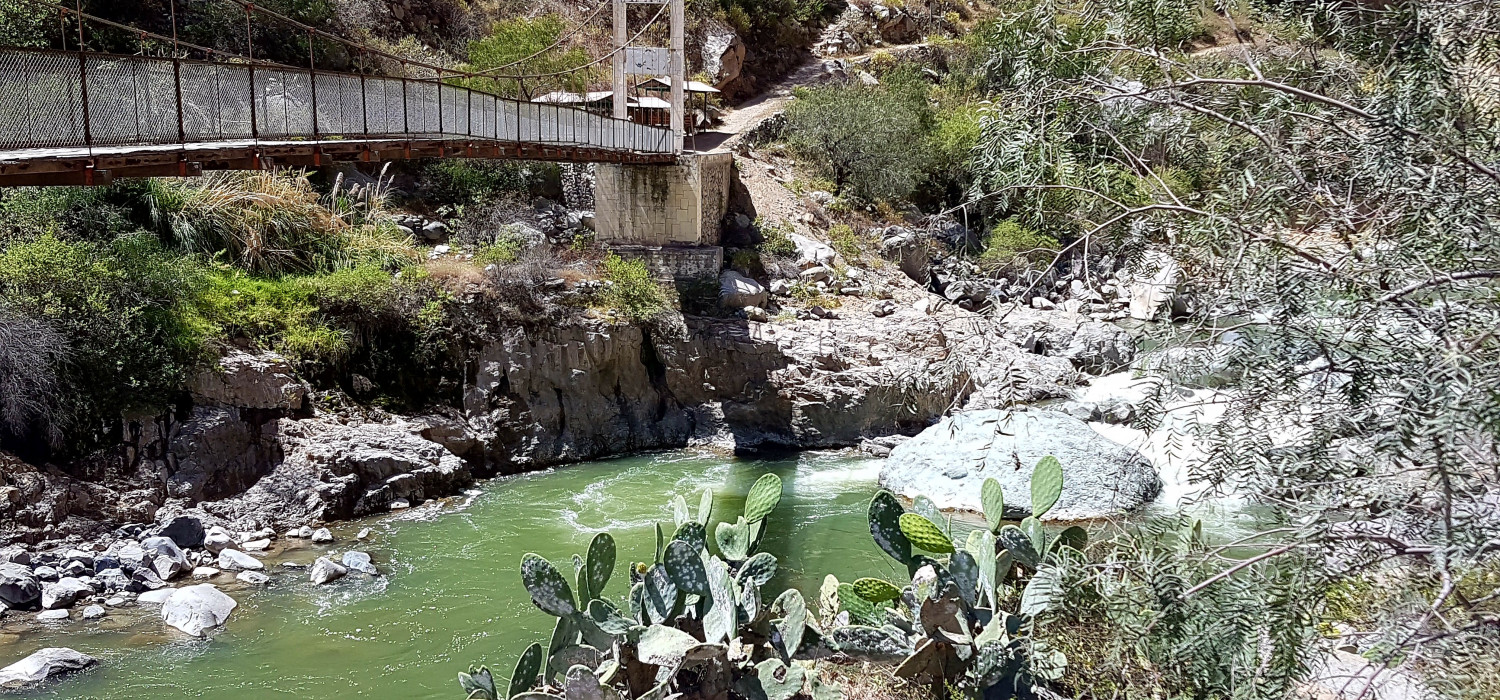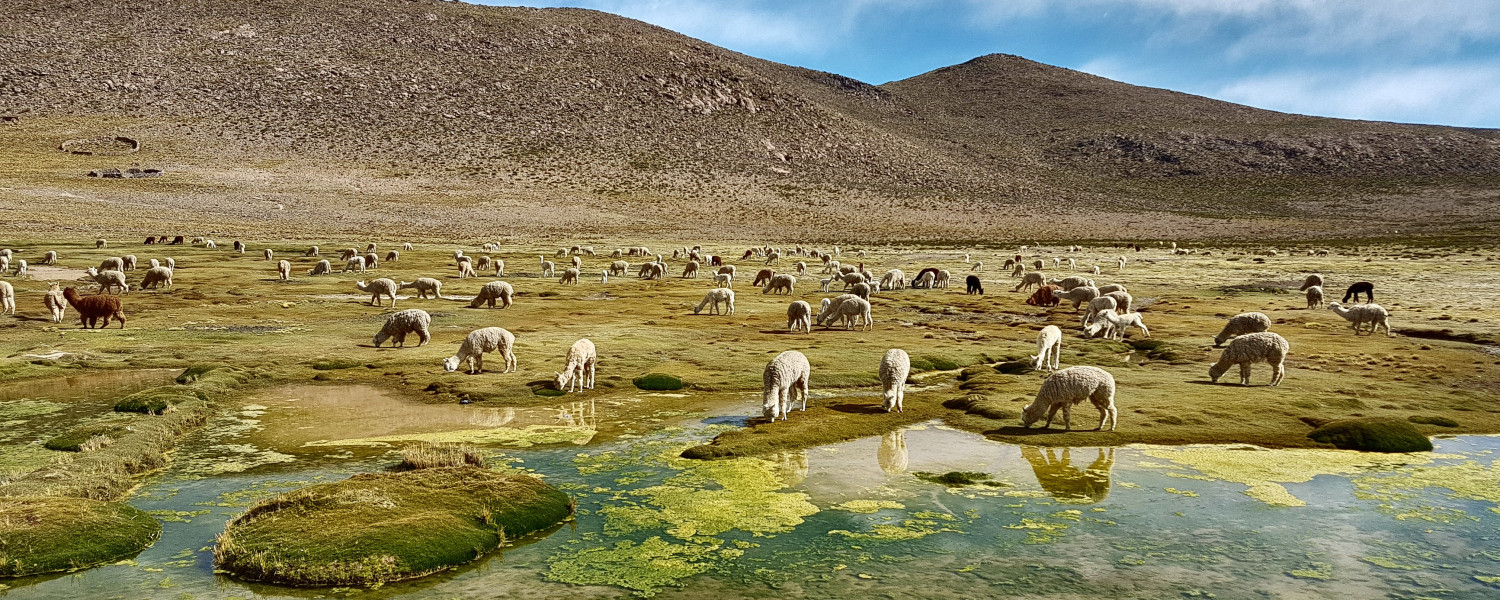I believe there are times when one should put the camera down and just enjoy the ascendancy of nature. Watching condors over Colca Canyon is surely one of these times. These beautiful birds are sacred in Peruvian mythology, a symbol of the passage between earth and the heavens; Colca Canyon is a prime place to watch them as they glide in the heat of the thermals, seeking out carrion to gorge upon. With a wingspan of up to ten feet, they are magnificently powerful, yet so beautifully serene – a mesmerising sight. According to Indian tradition, the condor, once ready to die, flies too high up, exhausting itself before dropping down to the ground to its death; a suicide of sorts. Scientists might be sceptical about this story, but I like the idea that when you’ve done your piece in life, you can choose to leave the world. I just stood and watched, realising that trying to take a photo which did justice to their size and grace was probably beyond my mediocre skills.
Colca Canyon is deep. There seem to various claims as to exactly how deep it is and which superlatives best describe it compared to other really deep canyons. If you decide to do the hike down, and then back up again, the burning pain in your shins will probably tell you all need you know. Our first day was long, and although mostly downhill, the zig-zag path was dry and steep, and the Peruvian sun particularly intense. It’s an ever changing journey of colours and textures; from deep, luscious jungle green to the dusty, arid land and golden glowing cliff faces. On the other side of of the canyon you can see the architectural beauty of the rice terraces carved into the hillsides by local tribes, the Collaguas and Cabanas who have inhabited the area for hundreds of years and still live there now.
Lunch was taken in the shadow of an avocado tree laden with fruit – Peruvian avocados are the best I have ever tasted. Once fed and watered, our guide led us on to a short, steep section he designated The Test: If we couldn’t walk up the section in less that 10 minutes, we would be taking a mule back up to the top the following day. There was only one of group who struggled. I am not sure how the mules feel about fat western tourists.
Our beds for the night were in basic wooden huts at the bottom of the canyon. There was a swimming pool and a bar but we were all too exhausted to a) swim, b) drink alcohol c) shower and d) make conversation. It has to be said that the food was pretty ropey but its all relative to the levels of available energy – and we were really too tired to care.
We set off on our hike back up at 4.45 the following morning, swaddled in darkness and enjoying the refreshing cool air. Although it is a tough climb up and the path is steep, I soon found my rhythm and made it to the top as daylight emerged. And breakfast.
On our trip back towards Arequipa, we made a few stops, the first one being at some hot springs. This was a series of pools of varying temperatures from extremely hot to fairly hot to a just little bit hot. The joy of such ‘attractions’ somewhat passes me by when they are inhabited by throngs of western tourist sweating, drinking, farting, pissing in what is essentially a very large bath. The river adjacent, however, was fast flowing, crystal clear and exquisitely cold. It took me a good fifteen minutes to submerge myself but the icy water was so wonderfully invigorating it felt as if I was absorbing the energy of the river through my skin. The exhilaration stayed with me all day.
Our last stop was to just indulge over the loveliness of these alpacas. Now, I have heard, on very good authority, that it is scientifically impossible to feel angry when you are looking at a penguin; I would extend this ‘fact’ to include alpacas who possess infinite cuteness and carry off the ‘just knitted’ look with exceptional finesse.

